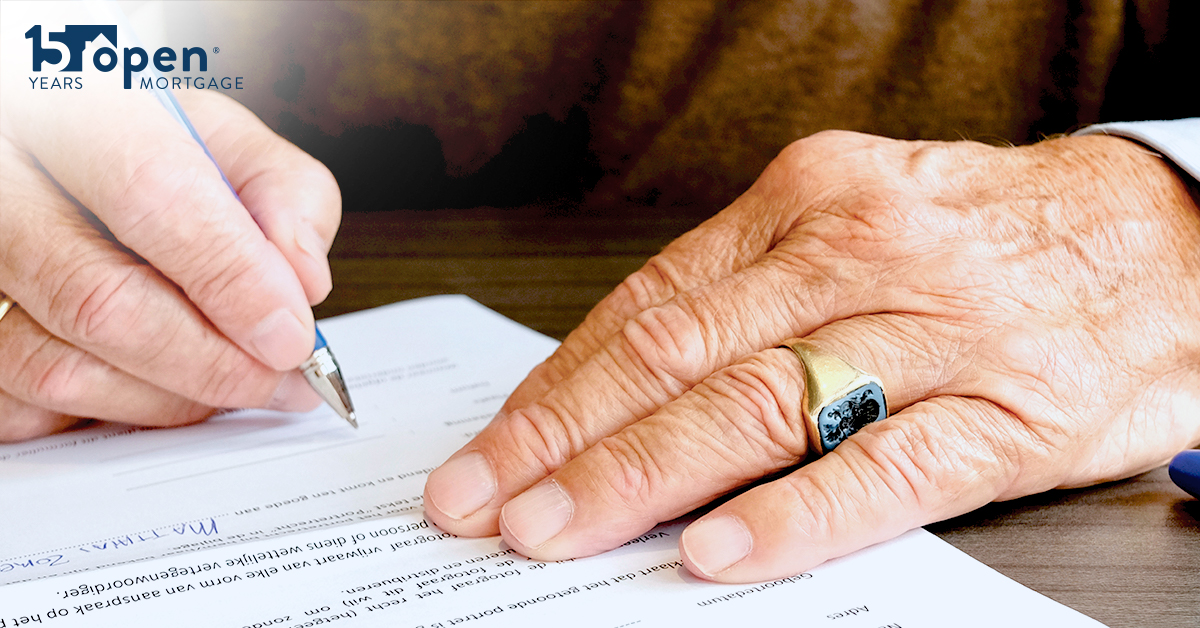
Taking Out a Reverse Mortgage? Here’s How To Prepare
If you’re in the market for a reverse mortgage (also known as a Home Equity Conversion Mortgage, or HECM), it’s a guarantee you’ll have a lot of questions, including what you’ll need to provide to make it happen. Even in the digital age, documents and paperwork can take some time and planning, so it’s good to gather documentation early in the process. As always, specifics vary according to individual loan and financial situations, but it’s likely you’ll need the following information before you sign the dotted line.
Get Counseled
Before a lender can process your reverse mortgage, they will need proof that you met with a HECM counselor as required by law.Your lender can provide you with a list of qualified counselors. After counseling (either in person or over the phone) is complete, you’ll receive a certificate. Your lender will need an original copy, so make sure to keep it with the rest of your documents.
Gather the Basics
Make sure basic personal and financial information is accessible before you start the process. You (and anyone applying for a mortgage with you) will need to provide evidence of your date of birth (generally a driver’s license or other government ID, as borrowers must be 62 years or older), and evidence of your social security number (generally your Social Security Card or Medicare Card with your social security number on it), a copy of your property tax bill and a copy of homeowners insurance. If you have a deceased spouse, you may also need a copy of his/her death certificate.
Because a reverse mortgage is limited to a principal residence, which The U.S. Department of Housing and Urban Development (HUD) defines as “a property that will be occupied by the borrower for the majority of the calendar year,” you’ll want to make sure the address on your primary form of identification (such as a driver’s license) matches the address of your property. Other documentation may be necessary to prove your address, so it’s best to keep tax records, recent bank statements, or voter registration on hand as well.
Prepare for Financial Assessment
Although you won’t have to pay a monthly mortgage payment to your lender with a reverse mortgage, lenders need to know you’ll be able to cover property taxes and homeowners insurance. You will still need to pay your real estate taxes, insurance and any other homeowner cost including HOA fees and home maintenance. That means you’ll need to provide documents indicating assets and income sources, including your pension, social security benefits, retirement accounts, paycheck stubs from part time or full time jobs, and tax returns, to name a few. Your lender can help you with the exact documentation you will need for your income source.
Check your Credit Report
Your credit report will be used as part of the financial assessment for a reverse mortgage. If it’s been a while since you’ve checked your credit report or credit score, it’s a good idea to unearth this information before you apply. The three major credit bureaus – Experian, Equifax and TransUnion – each offer a free annual credit report to consumers. Finding and addressing problems before it’s an issue for a lender is key to ensuring a stress-free application process.
Whether you’re ready to start the process of applying for a reverse mortgage or you still need a little guidance, Open Mortgage’s friendly loan originators are standing by to help you. Contact us today.
Things to know about Reverse Mortgages:
- At the conclusion of a reverse mortgage, the borrower must repay the loan and may have to sell the home or repay the loan from other proceeds
- Charges will be assessed with the loan, including an origination fee, closing costs, mortgage insurance premiums and servicing fees
- The loan balance grows over time and interest is charged on the outstanding balance
- The borrower remains responsible for property taxes, hazard insurance and home maintenance, and failure to pay these amounts may result in the loss of the home
- Interest on a reverse mortgage is not tax-deductible until the borrower makes partial or full re-payment





